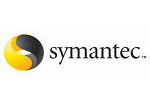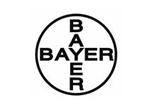DB2 Maestro online Help
| Prev | Return to chapter overview | Next |
Dependency tracker
Dependency tracker is a tool to browse all-level dependencies of a schema object (table, view, function, etc). To display dependencies of an object, drag and drop it from the Explorer tree (or Object Manager, Object Browser) to the tracker's working area.
This tool allows you to see the way any database object is involved in the net of scheme dependencies. The selected object is displayed in a highlighted rectangle in the center of the working area. The right side of this area represents objects depending on the selected one. The left side represents objects on which the selected object depends.
To highlight all occurrences of an object in the diagram, click the appropriate rectangle. Double click an object to change the tracker focus to this object. Right click a rectangle to display a popup menu with common operations related to the appropriate object.
![]()
The recursive dependencies are marked with a semicircle. This means marked object depends on itself directly or via other objects.
Example
Suppose we have two procedures A and B calling each other. The tracker displays these dependencies in the following way:

| Prev | Return to chapter overview | Next |





 Download
Download Buy
Buy

